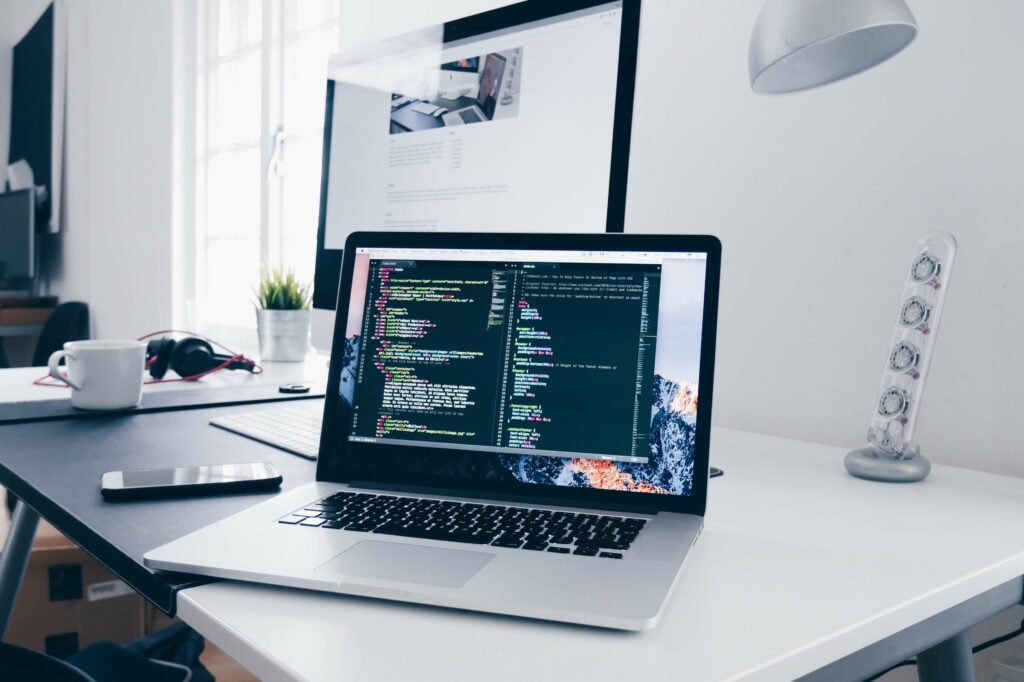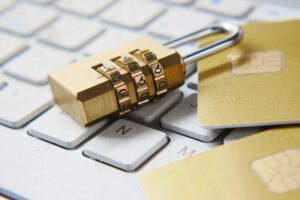
14.11.2023
Software Protection in Spain: Legal and Practical Aspects
How to protect software in Spain? Is it possible to patent software as in many countries in Europe or the USA? What protection measures can we give to lines of code in Spain? Is there any way to register software to prove the creation and the moment of creation? How many years of protection does intellectual property have in Spain? What is the General Intellectual Property Registry? Can software be registered in the Intellectual Property Registry? What is the process like? Can beta versions of software be protected? Can templates made with open source be protected? What are the time stamps regulated in the eIDAS Regulation? How is software protection regulated in the USA?
 Por
González Varadé, Patricia
Por
González Varadé, Patricia Software protection in Spain is an issue of great relevance for software creators and developers.
In the following, the different aspects of software protection in the Spanish legal context will be addressed, answering the questions posed.
Unfortunately, this quiz has a limited amount of entries it can recieve and has already reached that limit.
How to protect software in Spain?
In Spain, software is protected by intellectual property legislation, by the mere fact of its creation and without the need to register it or comply with any other formality.
Protection is based on copyright, recognised at the time of the creation of the software. In addition, the General Register of Intellectual Property is the competent body to carry out the registration of the software.
Is it possible to patent software as in many countries in Europe or the USA?
In Spain, software is not patented. Software in Spain can be registered (at the Registry mentioned above or before a Notary) to leave evidence of the creation and the moment of creation.
What legislation regulates copyright in Spain?
Copyright in computer programs is regulated by the provisions of Royal Legislative Decree 1/1996 of 12 April 1996, approving the revised text of the Intellectual Property Law.
Therefore, it is not possible to patent software in Spain, as protection is based on copyright.
What protection measures can we give to lines of code in Spain?
The protection measures that can be given to lines of code in Spain include:
- Protection through copyright, recognised at the time of the software’s creation.
- Registration of the software in the General Register of Intellectual Property.
- Deposit of the software, of all its elements, before a notary as an alternative to protect the software.
- Time stamps regulated in the eIDAS Regulation
How many years of protection does intellectual property have in Spain?
Intellectual property protection in Spain lasts for the life of the author and 70 years after his or her death.
What is the General Register of Intellectual Property and how do I access it? Is the General Register of Intellectual Property a public register that can be accessed by anyone?
The General Registry of Intellectual Property is the competent body for the registration of software in Spain. This registry is public and can be accessed by anyone interested in verifying the ownership of software or making enquiries about the intellectual property of computer programs.
What is the process for registering software in the Intellectual Property Registry?
In order to register software in the Spanish Intellectual Property Registry, certain steps must be followed and relevant aspects must be considered. The following are the procedures, requirements and considerations related to the registration of software in Spain, as well as the estimated time, fees and the possibility of opposition by third parties.

Si te ha interesado este artículo no dudes en leer:
Data protection for startups
Procedure for registering software in the Intellectual Property Registry
1. Central Registry or Territorial Registries:
- Registration can be done telematically or in person, by going to the provincial offices of the Central Registry or the corresponding territorial registry offices.
2. Requirements for registering software:
- Registration can be done both online and in person.
3. Documents to be provided:
- ID card of the holder(s) of the intellectual property rights of the software
- DNI of the registrant (if different from the holder)
- If the applicant is a legal entity, document proving its legal personality and VAT number.
- Date of release of the software, i.e. the date on which it was first commercialised (if released prior to the application for registration)
- Software title
- The entire source code
- An executable of the programme
- Memory containing a brief description of the program (optional) including, for example, the programming language, the operating environment, a file listing, flow diagrams, etc.
- Legal deposit number (if available)
- Proof of payment of fees.
4. Estimated time:
- The time it takes to register can vary, but it is estimated that the process can take approximately six months.
5. Fees:
- Registration is subject to a fee. At present (2023) it is less than 20 euros.
6. Opposition by third parties:
- In some cases, third parties may object to the registration of software, especially if they consider that the registered software infringes their intellectual property rights. However, registration provides a presumption of ownership of the moral and economic copyright in the software.
What elements can be protected?
Elements that can be protected include:
- Source code and object code
- Preparatory and technical documentation
- User manuals
- Content and structure of databases
- Elements incorporated in the programme, such as texts, images, animations, sounds, databases, etc.
Can user manuals or preparatory and technical documentation help to prove that the software is owned by the person who records the conception, design and creation of the lines of code?
Yes, preparatory and technical documentation, as well as user manuals, can help to prove that the software was conceived, designed and created by the registrant.
What is the process and can beta versions of software be protected?
The software protection process involves the registration in the General Register of Intellectual Property or the deposit of the software with a notary.
Beta versions of software can also be protected in the same way, as the registration or repository would cover the entire software, regardless of its version.
Can templates made with open source be protected?
Templates made with open source can be protected as long as they comply with intellectual property protection requirements. However, it is important to be aware of the licences and terms of use associated with open source.
Is it possible to protect software through the Notarial Deposit?
Yes, the software can be protected by depositing the software, of all its elements, with a notary as an alternative to registration in the General Register of Intellectual Property.
What are time stamps under the eIDAS Regulation?
Time stamps regulated in the eIDAS Regulation are digital certificates that guarantee the integrity and authenticity of electronic documents, providing legal validity, security and traceability. These stamps allow individuals and organisations to prove that a specific electronic document existed at a specific point in time and has not been altered since then.
In the context of electronic signatures, the time stamp is key, as it allows verifying the time at which the signature was made and guarantees that the document at that precise moment had a specific content. For a time stamp to be truly valid, it needs to have been issued by a qualified Trusted Service Provider, as this trusted third party uses advanced cryptographic techniques to generate a unique digital signature for an electronic document, which is then encrypted and securely stored in a container.
Under the eIDAS Regulation, a qualified timestamp is generated with a digital timestamp certificate issued by Trusted Service Providers accredited and supervised by competent bodies, such as the Ministry of Economic Affairs and Digital Transformation in Spain. The eIDAS accreditation in European Union countries for the issuance of qualified time stamps is based on compliance with the ETSI EN 319 401 and ETSI EN 319 421 standards.
In summary, the time stamps regulated in the eIDAS Regulation are fundamental tools to guarantee the integrity and authenticity of electronic documents, providing trust and security to online transaction processes, as well as in the context of electronic signatures.
How is software protection regulated in the USA?
In the United States, software protection is mainly governed by the Copyright Act and the Patent Act. Computer programs can be protected by copyright, and in some cases, they can also be the subject of patents if they meet patentability requirements. Among these patentability requirements there is only one limitation set by the Supreme Court: Software cannot be an abstract solution. As long as the software describes a specific solution it is patentable. If the solution is abstract, it is not patentable.
If you enjoyed this article, you may also find it interesting to read the following one:
Legal Aspects of Blockchain, Tokens and DLT Technology
Contacto No te quedes con la duda, contacta con nosotros. Estaremos encantados de atenderte y ofrecerte soluciones.












